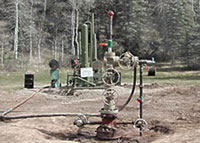In Alaska, some 4,000 miles from Capitol Hill, global warming is neither an abstraction nor up for debate. It’s simply a reality — and not, generally speaking, a pleasant one. High water is eating away houses and buildings, mosquitoes are invading where once they were unheard of, hunters are getting trapped on breakaway ice, permafrost is no longer permanent (meaning building foundations are slouching and buckling), and on the Kenai Peninsula, a 4 million acre spruce forest has been killed by hot-weather-happy beetles in the largest forest loss ever recorded in North America. Sen. Ted Stevens, a Republican, can hardly take the party line on climate change when he’s witnessed the sagging roads, crumbling towns, dead forests, and catastrophic fires that are devastating his home state. Mean temperatures in Alaska have risen by 5 degrees in summer and 10 degrees in winter since the 1970’s, federal officials say, and climate models predict that temperatures will continue to increase over this century, by up to 18 degrees.


